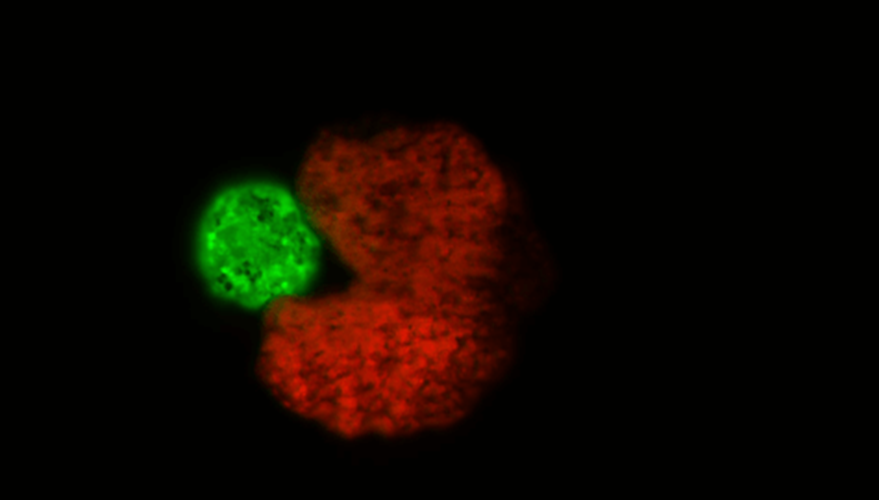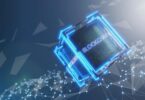The integration of man and machine has been ongoing movement for sometime now, as The WinePress has covered many of these many developments made by scientists and engineers.
And with a recent scientific and technological announcement, the move to a transhuman future has just taken another leap forward.
In a joint study, the Universities of Harvard and Vermont, and Tufts University, have developed what are known as “xenobots” (xeno meaning “alien,” “strange,” “foreign”) out of frog cells. The process was created on the computer and then assembled by hand.
The scientists working on the project called them “living machines,” which are the first ever robots that can self-replicate and beget their own “offspring.”
These tiny xenobots were shown to have the capabilities to swim out of a petri dish, gather cells, and use those cells to generate a baby xenobot.
What was once science fiction and fantasy is now reality.
With the right design — they will spontaneously self-replicate.
Joshua Bongard, a computer scientist and robotics expert at the University of Vermont, in a release.
We’re putting them into a novel context. We’re giving them a chance to reimagine their multicellularity.
This is profound. These cells have the genome of a frog, but, freed from becoming tadpoles, they use their collective intelligence, a plasticity, to do something astounding.
We have the full, unaltered frog genome, but it gave no hint that these cells can work together on this new task.
Mark Levin, a biology professor at Tufts University.
Douglas Blackiston – the study’s co-author, senior scientist from Tufts University who put together the “parent” xenobots, and created the biological aspect of the study – said, “People have thought for quite a long time that we’ve worked out all the ways that life can reproduce or replicate. But this is something that’s never been observed before.”
These are frog cells replicating in a way that is very different from how frogs do it. No animal or plant known to science replicates in this way.
Lead author Sam Kriegman
The team utilized an artificial intelligence program to help them determine how the xenobots should be formed, in order to ‘capture’ the clumps of cells needed for the replication. The AI transformed the bots to form a Pac-Man shape to ‘eat’ the collection of cells.

We asked the supercomputer at UVM to figure out how to adjust the shape of the initial parents, and the AI came up with some strange designs after months of chugging away, including one that resembled Pac-Man. It’s very non-intuitive. It looks very simple, but it’s not something a human engineer would come up with. Why one tiny mouth? Why not five? We sent the results to Doug and he built these Pac-Man-shaped parent Xenobots. Then those parents built children, who built grandchildren, who built great-grandchildren, who built great-great-grandchildren.
Kreigman explained.
We’ve discovered that there is this previously unknown space within organisms, or living systems, and it’s a vast space. How do we then go about exploring that space? We found Xenobots that walk. We found Xenobots that swim. And now, in this study, we’ve found Xenobots that kinematically replicate. What else is out there?
Joshua Bongard said
Though they admit that the general masses will have concerns about these new tech and practices, the team ultimately feels it will be a benefit to mankind.
The world and technologies are rapidly changing. It’s important, for society as a whole, that we study and understand how this works. The speed at which we can produce solutions matters deeply. If we can develop technologies, learning from Xenobots, where we can quickly tell the AI: ‘We need a biological tool that does X and Y and suppresses Z,’ — that could be very beneficial. Today, that takes an exceedingly long time.
Bongard stated
If we knew how to tell collections of cells to do what we wanted them to do, ultimately, that’s regenerative medicine—that’s the solution to traumatic injury, birth defects, cancer, and aging. All of these different problems are here because we don’t know how to predict and control what groups of cells are going to build. Xenobots are a new platform for teaching us.
Levin concludes
These findings and more can be read in the Proceedings of the National Academy of Sciences.
AUTHOR COMMENTARY
Earlier this year The WinePress reported that legislature in the U.S. was passed that allows AI and robots to be patent owners. In other words, they can be viewed as their own entities with their own inventions. One may be able to make a bridge to how self-begetting machines may be granted their own parental status for their ‘children.’
Artificial Intelligence Is Now Viewed As A Person Who Can Claim To Be Patent Holders, Court Rules
A Transhuman Future: Cloning Mankind, Man-Animal Hybrids, Cyborgs, And “Bio-Pharma”
The Satanic Rebirth And Growth Of Eugenics, Gene Selection, And Transhumanism
[7] Who goeth a warfare any time at his own charges? who planteth a vineyard, and eateth not of the fruit thereof? or who feedeth a flock, and eateth not of the milk of the flock? [8] Say I these things as a man? or saith not the law the same also? [9] For it is written in the law of Moses, Thou shalt not muzzle the mouth of the ox that treadeth out the corn. Doth God take care for oxen? [10] Or saith he it altogether for our sakes? For our sakes, no doubt, this is written: that he that ploweth should plow in hope; and that he that thresheth in hope should be partaker of his hope. (1 Corinthians 9:7-10).
The WinePress needs your support! If God has laid it on your heart to want to contribute, please prayerfully consider donating to this ministry. If you cannot gift a monetary donation, then please donate your fervent prayers to keep this ministry going! Thank you and may God bless you.







